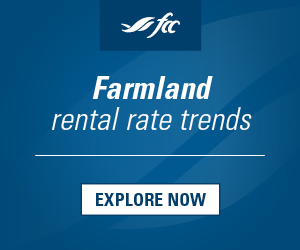Business side: Financial reporting 101
CONVERSATIONS WITH BUSINESS EXPERTS

(R.H.) WHAT OPTIONS ARE AVAILABLE FOR FINANCIAL REPORTING AND WHICH DO YOU RECOMMEND?
(B.R.) It is important to understand that financials can be prepared using accrual or cash-based accounting methods. Farms are the only type of business able to file on a cash-basis and typically farmers are keen to do so to take advantage of income tax benefits. However, to make good management decisions and monitor how the business is really doing, farmers should be using accrual financial statements.
WHAT SHOULD GROWERS KNOW ABOUT ACCRUAL FINANCIAL REPORTING?
Unlike cash-based reporting, financial statements highlight items such as accounts receivable, prepaid expenses, and inventory.
The most common example of prepaid expenses is the purchase of inputs in December. This is often a strategy to take advantage of purchase incentives and to reduce the expected income tax bill. The Canada Revenue Agency (CRA) does allow such expenses to be deducted on a cash-basis when the inputs will be used within the following year. Once this strategy is used once, it is something that farmers tend to continue to do each year even when performance changes or improves.
Accounts receivable may be listed at year-end if revenue has been earned but payment has not yet been received or deposited. In the case of inventory, I often see crop being held over year end for tax reasons as well. When this is the mindset, growers may be solely focused on reducing income tax and could miss out on taking advantage of good marketing opportunities.
Accounts receivable, expenses, and inventory appear as assets on the balance sheet and essentially, tie up available cash. It is very tempting to get into the trap of trying to get the best cash tax result as at year-end but this is not always the best way to run a business. Cash needs to be managed effectively.
Growers understand the production cycle from the point of view of what has to happen in the fields but should also have a strong handle on the costs involved from a cash perspective. The shorter the time it takes from purchase and planting to harvesting and marketing, the more efficient the cycle is. Accrual financial statements can help with understanding this.
WHAT ARE THE COMPONENTS OF A FINANCIAL STATEMENT AND WHAT INFORMATION DO THEY PROVIDE?
The components include a balance sheet, net worth statement, income statement, cash flow statement, and notes.
A balance sheet represents what is owned and what is owed at a point in time. It is prepared on a book-value basis so it does not include fair market value adjustments for quota, equipment, or land; however, it does value inventory at market value. This statement should be prepared in accordance with the Canadian Accounting Standards for Private Enterprises – a requirement in the case of a Review Engagement type of statement. It is also a good idea for Notice to Reader statements. The type or level of accrual statements needed is often determined by bank requirements depending on borrowings.
Current assets, long-term assets, current liabilities, long-term liabilities, and owner’s equity are the sections on a balance sheet. Accounts receivable and inventory that will be converted to cash in the next 12 months and cash itself are listed as current assets, whereas long-term assets are property, buildings, equipment, and quota. Current liabilities are items due in the next 12 months as well as the current portion of long-term debt. Long-term liabilities include loans amortized over multiple years. Assets minus liabilities equal equity and this is a measure of how the business is doing. It can be known as proprietor’s equity or retained earnings depending on the business structure.
Net worth statements are based on the historic balance sheet but are adjusted for fair market values. This statement can be produced through a bookkeeping system by adjusting the values for quota, equipment, and land to what they are worth today. This statement and a cost-based balance sheet are important to bring to a bank when seeking financing.
An income statement monitors performance and captures revenue and expenses in a 12 month period. It determines profitability during that period and can be used to measure financial ratios and operating efficiencies.
A statement of cash flow lists net earnings and adds back depreciation and other non-cash items to determine cash generated from operations. It then lists the changes in cash throughout the period compared to the last year. The statement can be used to review how much cash was generated and what was done with it — the financing section shows how much cash was used to pay down debt and the investing section shows the amount that was put towards an equipment purchase, for example.
WHAT YEAR END BEST PRACTICES DO YOU ENCOURAGE?
Most operators use a bookkeeping program that can store all of the information needed for year-end statements to be prepared. Farmers who have filed taxes on a cash-basis may be used to only providing the accountant with year-end totals for their tax return but may keep a balance sheet internally that can also be shared so that accrual statements can be prepared.
The more diligent farmers are on the bookkeeping side, the better the quality of information is going to be and the better timing you will be able to get from the accountant. Do not be afraid to meet with your accountant before year end to discuss tax strategies (that make sense!) and make the time to meet with them when the statements are complete to review. Some business owners may say that cash flow statements are difficult to understand, for example, but spending time to go over it even once can help and the information can then be used as a business tool in the future. •







